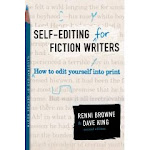
by Pam Zollman
Quick Review:
Scene has three parts: Goal, Conflict, and Disaster.
A scene must have action that moves the story forward in some way. It has a goal -- it's going somewhere specific. It has conflict -- something that elevates the tension. It has disaster -- something that makes the reader want to turn the page to see what happens next; it increases the reader's interest.
Sequel has three parts: Reaction, Dilemma, and Decision.
Every Scene has a Sequel. Sometimes sequels are extremely short, so short, in fact, that you might not even notice that they're there. But when they're omitted, you notice...even if you're not sure why. You just know that something is missing. That "something" is usually motivation. Sequel gives the motivation for why a character does something. It sets up the following scene, giving it its goal.
After the disaster, your character has to figure out what just happened and what he should do about it. This tells the reader why your character has made a certain decision. It gives your character a chance to recover from the disaster, if even for a moment. It also gives your reader a slight break in the tension, although the decision that your character makes should ramp the tension/suspense back up again.
Next time we'll go into detail about the first part of Sequel: Reaction.
If you have questions, feel free to email me at pam@anauthorworld.com. Also check out AnAuthor World's website (www.anauthorworld.com) for upcoming events, workshops, classes, and conferences in the Upstate South Carolina area.




















